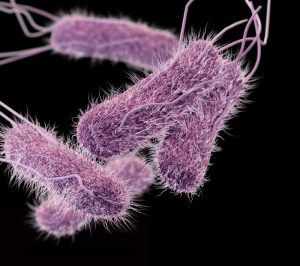NewsDesk @bactiman63
In early February, Chinese health officials discovered a unusual event–four clinically diagnosed typhoid cases (3 in Beijing, 1 in Chifeng City, Inner Mongolia Autonomous Region).

A detailed epidemiological investigation was initiated by Changping District CDC. This outbreak involved 23 cases in an apartment in Changping District in Beijing (no cases from the neighboring apartment) and was caused by extensively drug-resistant (XDR) Salmonella Typhi (S. Typhi) through polluted water supply, which was confirmed by laboratory detection.
According to the China CDC, by combining the epidemiological investigations, bacterial isolation from patients and household water, whole genome sequencing and drug resistance analysis, they identified a waterborne typhoid fever outbreak caused by XDR S. Typhi in Beijing municipality. This was the first report of the XDR S. Typhi triggered outbreak in Beijing, which was also rare in China.
Immediate control measures were implemented including health education of the public and emphasis on chlorination of drinking water and sanitation.
The landlord of the apartment was instructed the landlord to clean and disinfect the water tank and water pipeline network, and it was required that the water supply could be restored only after water was eligible according to relevant hygiene standards after two consecutive laboratory tests.
- Hawaii: Probable mumps case reported on Big Island
- Measles outbreak in Congo: 4600 cases, 123 deaths
- North Carolina: Norovirus cases reported at Fort Bragg
- Shigella (XDR) situation in Europe: WHO statement
- Minnesota: Bird flu reported in two counties
- Leptospirosis in Fiji: Nearly 1400 confirmed cases to date, Cases decreasing
- England reports imported Crimean-Congo hemorrhagic fever case
- South Africa: RSV season has began, alert issued to physicians
- South Korea is still the world’s COVID-19 hotspot, reporting nearly 400K cases today

